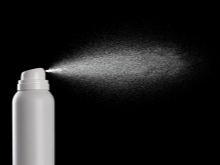How to choose a cover for a fur coat?

How to store a fur coat
A warm and reliable fur coat pleases each of us in the cold winter, protecting from the cold, giving care, comfort and enjoyment of soft fur. But when winter ends, it's our turn to take care of it by organizing the right storage conditions until the new cold weather. After all, it depends on how many more seasons a fluffy beauty can serve us, remaining warm, beautiful and comfortable.

Fur storage rules:
- Fur must be protected from both direct sunlight and artificial light from electric lamps. Otherwise, it becomes dull, brittle and even burns out.
- The pile of a fur coat needs space in order to “breathe” normally, not to wipe off and not to deform. To do this, it is necessary to ensure that other wardrobe items do not hang close to the product, do not crush it.
- For the "breathing" of the fur, a sufficient amount of oxygen is also needed. Therefore, it is undesirable to store fur in plastic bags and bags, vacuum packaging: the product will “suffocate” and become “warped”.
- On those days of winter, when a fur coat is not put on, it is not bad to take it out to the balcony for several hours and let it hang in the frosty air. In summer, it is necessary to periodically remove the fur coat from the closet and “shake up” the fur.
- The fur coat must be stored in a hanging position on a hanger. It is unacceptable to put it on a shelf, especially one that has been folded several times - this will deform it, spoil the quality of the fur, and reward the mezra with creases.
- The product placed on the hanger should be fastened with all buttons, hooks or zippers. Otherwise, the fur can stretch in places, and the fur coat itself can move off the hanger, wrap itself up and, therefore, deform.
- It is necessary to take care of protection against insects that can spoil the skin - moths and skin beetles.
- And, of course, the main assistant designed to protect the fur coat from dirt, dust, light and insects is a special cover for storing a fur coat.


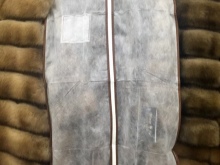
What is it for and what are its advantages
- You can, in the old fashioned way, use folk methods to store a fluffy beauty - black pepper or lavender sachet against moths, sew a cover with your own hands or, in general, hoping for "maybe", store it in a plastic bag.



- It is also possible to deposit it in a fur refrigerator, if, of course, there is one in your city. It is great if there is an opportunity to buy such a refrigerator for personal use - it costs like an average fur coat, not everyone can afford it.

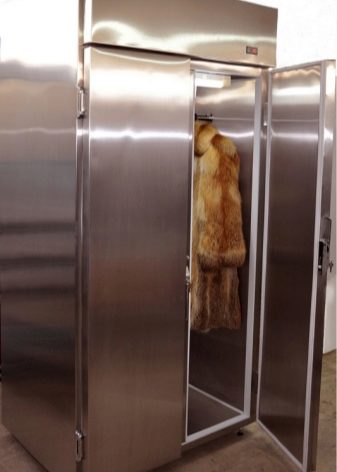
- Nevertheless, the most optimal thing in terms of price and quality that can be done for proper storage of a fur coat is to purchase a special cover: both inexpensive and affordable.
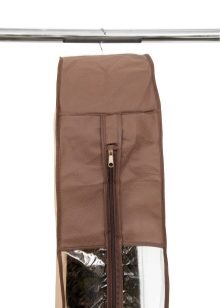

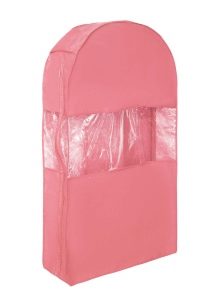
The difference between a regular cover and a model for a fur coat
The cover for clothes is usually not suitable for storing a fur product, as it does not meet the storage conditions necessary for a fur coat. What are the main differences between a special cover for a fur coat and an ordinary wardrobe cover?

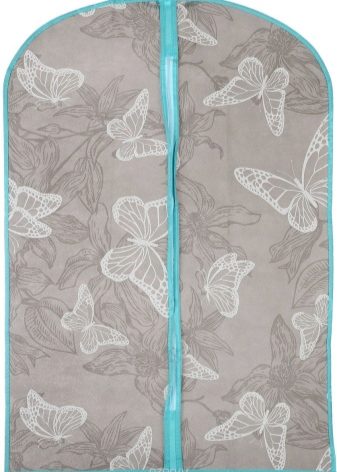
Strong and durable hanger of the correct form.
Best suited wooden with wide and round hangers.Only this will be able to withstand the weight of the fur coat for a long time, will not bend, break, will not allow the product to sag or deform. Not every ordinary clothes case has such a hanger.

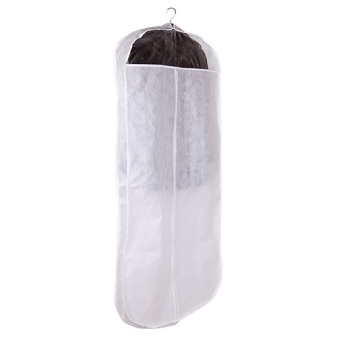
material opacity.
Conventional clothing covers are often made entirely or partially of polyethylene so that you can see what kind of wardrobe item is inside. This is convenient: you can easily find the right thing without unfastening the cover. When storing fur, polyethylene is contraindicated, as it transmits natural and artificial light. A small plastic window on the cover is acceptable, but it is better without it at all.
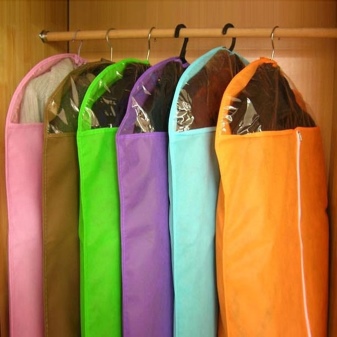

The special strength of the material.
Like the hanger, the fabric of the cover must also be able to support the weight of the fur coat. Not every wardrobe can handle this. Also, the fabric should not be too thin and soft, so that the pile of the fur coat does not pierce it.


Special form of a cover.
Because of the bulky fur, the fur coat takes up more space in the case than any other piece of clothing. An ordinary case will compress the product, crushing the fur, preventing it from breathing normally, and maybe even deforming it. The cover for storing a fur coat has a particular fixed shape, created with the help of a side insert of the same width along the entire length of the cover or narrowed towards the bottom. The fluffier the fur and the more voluminous the product, the wider the side insert of the cover should be.

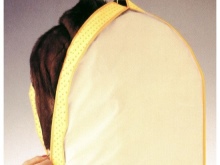
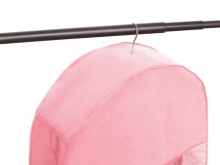
How to choose
The size
- It must correspond to the size of the fur coat, so that the product in the case does not have folds and creases in the fur, i.e. be spacious enough.
- The side insert on the cover that exists for this should be especially wide for bellows with a long and wide pile.
- It is also necessary that the length of the cover be longer than the product - by 10-15 cm. On sale you can find covers for fur products with a length of 90 to 130 cm. Larger sizes can be sewn "on order".

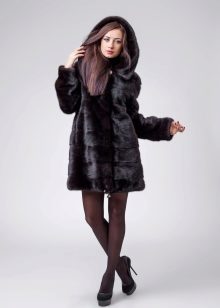
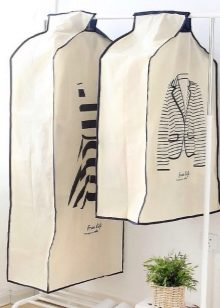
Material
- The ideal fabric for a cover is made from natural fibers: cotton, linen, canvas (canvas). A cover made of such material has high air permeability, good hygroscopicity, and is opaque.
- The structure of the fabric should be dense and strong, corresponding to a light and relatively bulky outer product.
- The cover can also be made of spunbond - a non-woven thermally bonded polypropylene material that allows air to pass through.
- The color of the cover is better to choose dark - blue, black, brown. Blue is suitable for white fur. Before use, it is a good idea to check the cover for the quality of staining: whether it will shed when held over it with a damp cloth.



Lightning
It must be along the entire length of the case and must necessarily start from the hole for the trempel, and this hole must certainly have additional reinforcement: this part is most prone to tearing and damage.
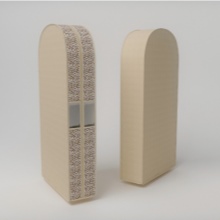
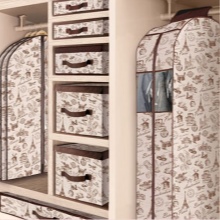
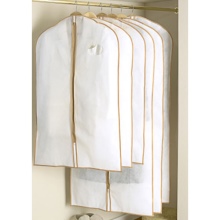
Moth protection
- Many manufacturers impregnate the cases with a special anti-mole compound. This impregnation is harmless to fur coats, but it repels moths and leather-eaters, which are also pests for fur products.
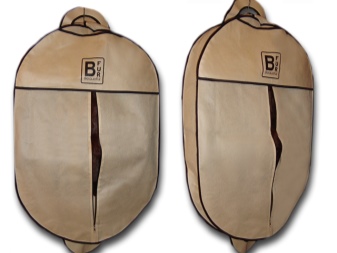
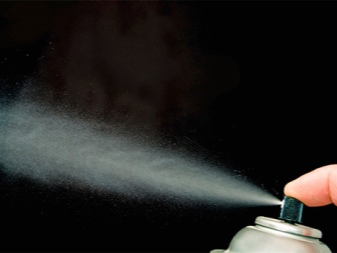
- It is good to additionally place moth repellents inside the cover and in the pockets of the fur coat - naphthalene tablets, lavender sachets, tobacco-scented bags, cedar balls.


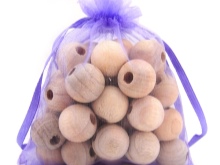
- There are anti-repellent moth sprays. They must be sprayed on the cover itself, but not on the fur coat. The spray is especially relevant, given that over time, the anti-mole impregnation of the cover disappears. These funds harm and kozheedam.
